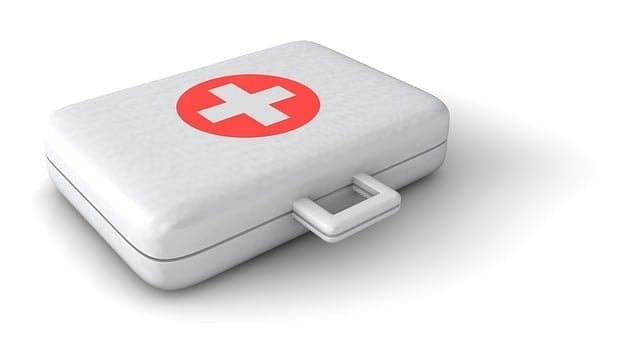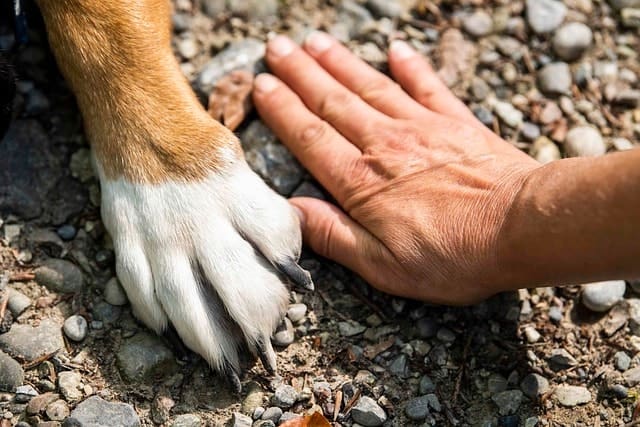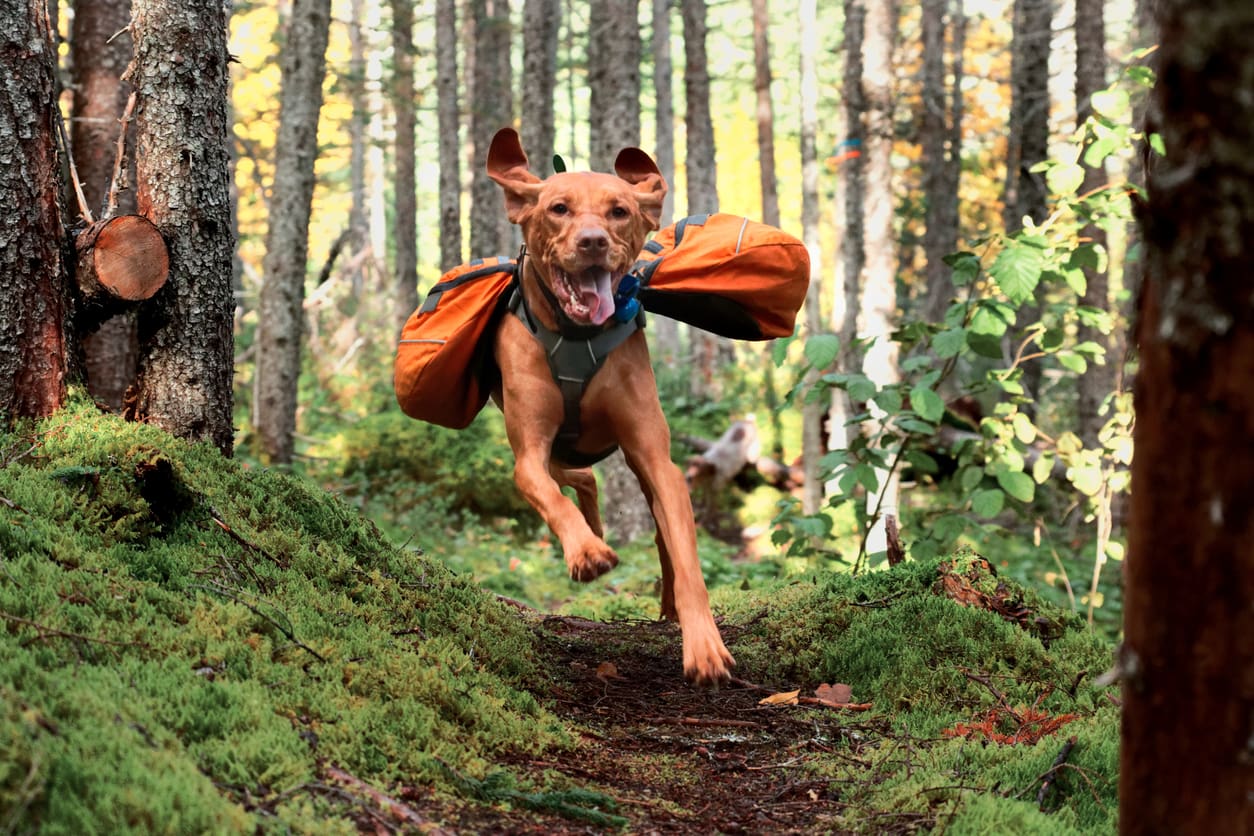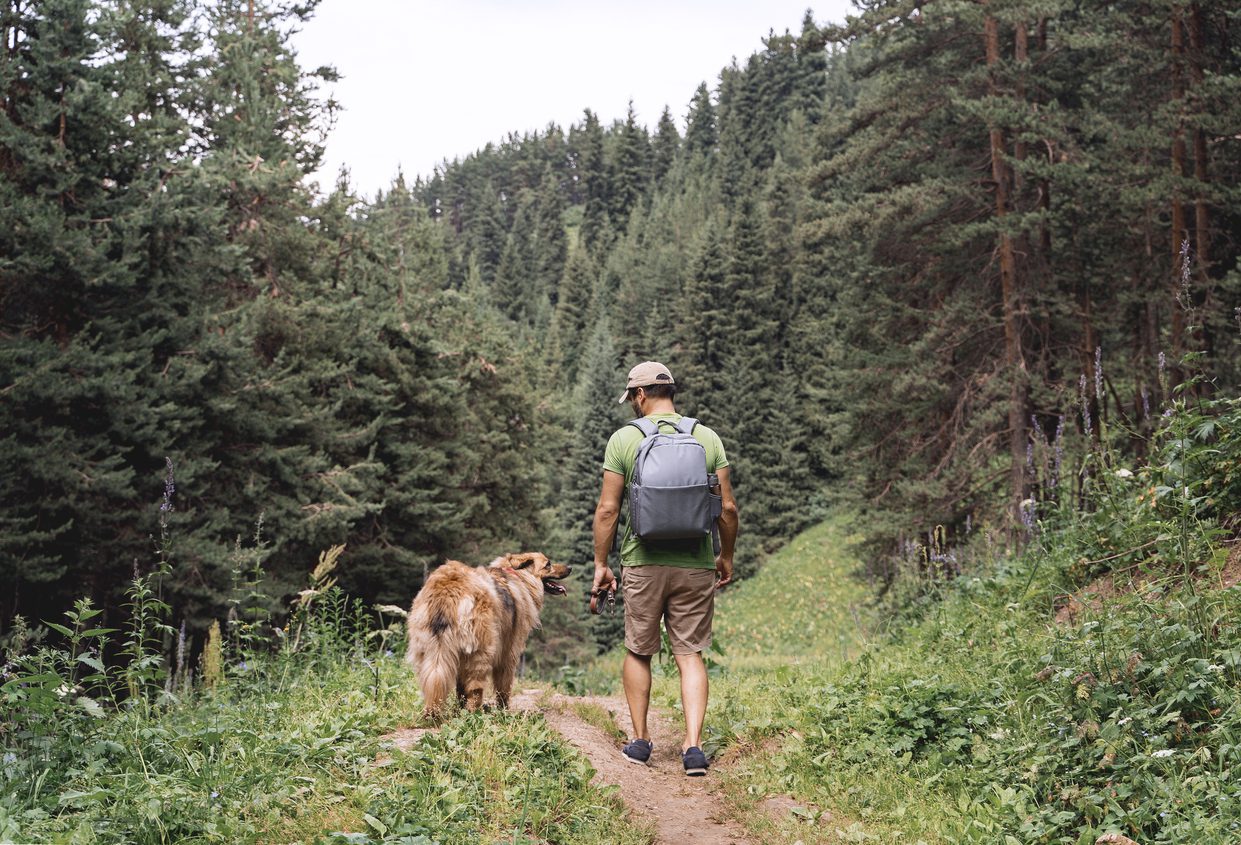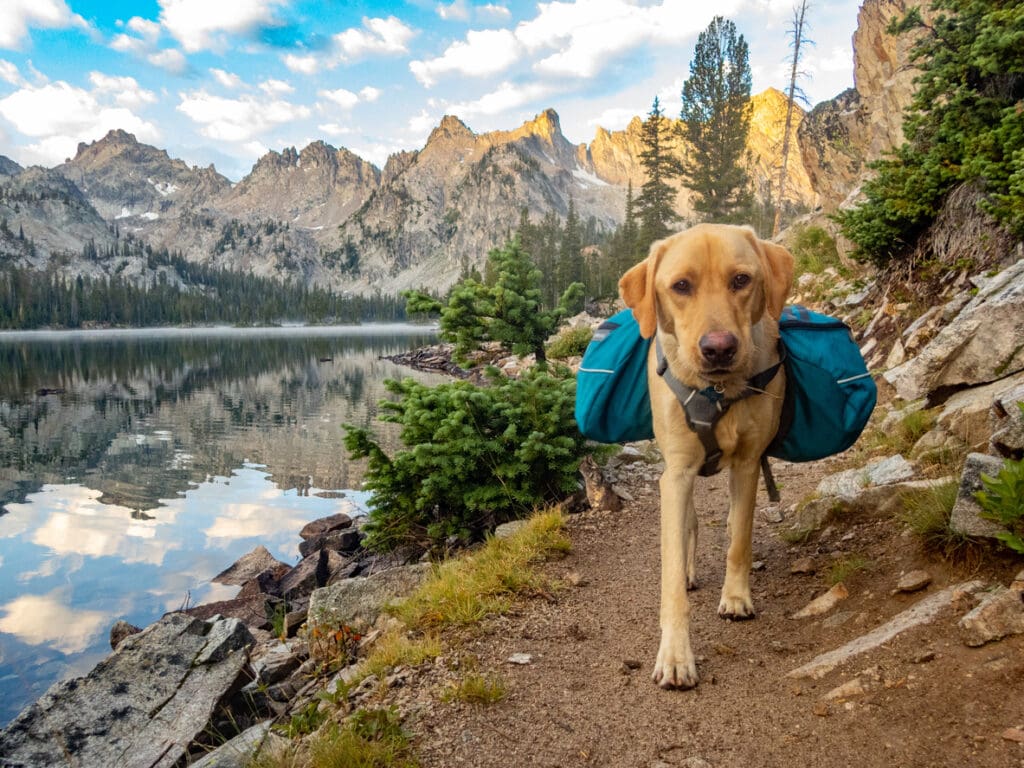
Whether you’re hiking through forested switchbacks, paddling out to a backcountry campsite, or exploring rugged desert terrain, one thing is certain: if your dog is coming along for the adventure, you need to be ready for the unexpected.
Exploring the great outdoors with your dog can be an exhilarating experience, but it also requires careful preparation to ensure their safety.
Dogs are just as susceptible to injury, dehydration, heat exhaustion, and insect bites as humans — and when you’re far from civilization, every decision matters.
In this post, we’ll walk through essential first aid tips for adventure dogs when you’re in remote or wild locations. You’ll learn what to watch for, what to pack, and how to treat common trail injuries so you can keep your pup safe, healthy, and ready for the next trek.
Introduction to Adventure Dog Care
As a responsible dog owner, it’s essential to be prepared for any situation that may arise during outdoor adventures with your furry friend. A well-stocked dog first aid kit is a must-have for any dog owner who wants to ensure their pup’s safety and well-being. Whether you’re hiking, camping, or simply enjoying a stroll, having the right gear and knowledge can make all the difference in case of an emergency.
A dog first aid kit should include essential items like gauze pads, self-adhesive bandages, antiseptic wipes, and a tick remover tool. These items can help you respond effectively to minor injuries and prevent them from becoming serious medical emergencies. Additionally, knowing how to administer basic first aid and when to seek emergency veterinary care is crucial for your dog’s safety.
Being prepared with a dog first aid kit and the skills needed to use it can give you peace of mind during your outdoor adventures. Remember, your dog relies on you to keep them safe, so make sure you’re ready for any situation that may come your way.
Why First Aid Preparedness Is Essential for Outdoor Dogs
Being in the backcountry means limited or no access to veterinary care — especially for multi-day hikes or camping trips. Cell signal is unreliable, and driving to the nearest emergency vet might be hours away, making it crucial to be prepared for any medical issues that may arise.
That’s why having basic first aid knowledge and the right gear on hand can make all the difference. Not only can it prevent a minor issue from turning serious, but it can also keep your dog calm and stable until help is available.
Must-Have Items in Your Dog’s Adventure First Aid Kit
Before diving into treatments, let’s talk about what should be in your dog's medical kit. Here’s a checklist of essentials every adventure dog owner should carry in remote terrain:
First Aid Kit Essentials:
- Gauze pads and rolls – for covering wounds
- Self-adhesive vet wrap – stays put without tape
- Antiseptic wipes or spray – clean cuts and prevent infection
- Tweezers – for splinters, ticks, or thorns
- Tick remover tool – safer than fingers or regular tweezers
- Dog-safe antihistamines – use under vet guidance for allergic reactions
- Instant cold pack – for swelling or sprains
- Blunt-tip scissors with rounded tips – to trim fur or cut bandages safely
- Muzzle – even the sweetest dog may nip when in pain
- Booties or socks – protect injured paws
- Emergency mylar blanket – regulates temperature if your dog goes into shock
- Hydrogen peroxide – to induce vomiting (ONLY if advised by a vet)
- Saline solution – for rinsing eyes or flushing wounds
- Benadryl (diphenhydramine) – 1 mg per pound of body weight for allergic reactions (ask your vet for dosing advice)
Pro Tip: Many outdoor dog owners keep a separate pre-packed “go bag” with these items and their regular trail gear (water, food, leash, bowl, etc.).
Common Injuries & How to Treat Them in the Wild
Knowing how to flush wounds and when to act is crucial when time matters. Let’s walk through some of the most common dog injuries in backcountry environments — and how to handle them like a pro.
1. Paw Pad Cuts or Abrasions
Dogs’ paw pads are tough, but sharp rocks, ice, and hot surfaces can still cut or blister them.
Treatment:
- Flush with saline or clean water.
- Apply antiseptic and cover with gauze.
- Apply pressure until the bleeding stops.
- Wrap with vet wrap and secure with a bootie if available.
- Limit walking — carry your dog out if the injury is severe.
2. Snake Bites
If you’re in rattlesnake territory, this is a real concern. Symptoms include swelling, pain, and disorientation.
- Seek veterinarian care immediately — this is a true emergency.
Treatment:
- Keep your dog calm and limit movement.
- Do not apply a tourniquet or try to suck venom.
- Carry your dog if possible.
- Seek vet care immediately — this is a true emergency.
Tip: Consider the rattlesnake vaccine if you frequently hike in venomous snake zones.
3. Insect Stings or Allergic Reactions
Bees, wasps, and spiders can trigger swelling and reactions, especially around the face, neck, or paws. Give a small amount of Benadryl (check dosage with your vet).
Treatment:
- Remove stinger if visible.
- Apply a cold compress.
- Give Benadryl (check dosage with your vet).
- Watch for breathing difficulties or signs of anaphylaxis.
4. Heat Exhaustion or Dehydration
Dogs can overheat quickly — especially on exposed trails or during summer hikes.
Avoid taking your dog on strenuous hikes during the hottest parts of the day to prevent heat exhaustion.
Symptoms:
- Heavy panting
- Drooling
- Weakness or collapse
- Bright red or pale gums
Treatment:
- Move to shade.
- Offer small sips of water.
- Wet paws and belly with cool water.
- Use a mylar blanket to shade or wrap.
- Avoid cold plunges — too sudden cooling can cause shock.
5. Lacerations or Puncture Wounds
Injuries from sticks, sharp rocks, or wildlife can break the skin and lead to infection if untreated. Clip fur around the wound, especially for larger wounds, to ensure proper cleaning and treatment.
🔧 Treatment:
- Clip fur around the wound.
- Flush with saline or antiseptic.
- Apply gauze and wrap firmly (not too tight).
- Keep dog calm and limit activity.
6. Sprains or Limping
If your dog suddenly begins limping, it could be a sprain, strain, or thorn in the paw.
Use duct tape to create a makeshift splint if necessary. This can help immobilize and support the injured limb, especially when combined with towels.
Treatment:
- Inspect the paw and leg carefully.
- Remove any debris with tweezers.
- Apply cold pack to reduce swelling.
- Wrap if swelling persists and carry your dog if necessary.
Recognizing Signs of Distress
Recognizing signs of distress in your dog is crucial for providing timely and effective aid. Dogs may exhibit various signs of distress, including panting, drooling, and restlessness, which can indicate anything from heat exhaustion to allergic reactions. It’s essential to be aware of your dog’s condition and behavior at all times, especially during outdoor activities.
If you notice any unusual behavior or physical symptoms, it’s crucial to respond quickly. For instance, heavy panting and drooling could be signs of heat exhaustion, while swelling and hives might indicate an allergic reaction. In such cases, offering cool water, moving to a shaded area, and administering dog-safe antihistamines (under vet guidance) can help alleviate the symptoms.
Always keep an eye on your dog’s behavior and be prepared to seek professional help if necessary. Knowing how to recognize and respond to signs of distress can make a significant difference in your dog’s well-being during outdoor adventures.
Emergency Action Plan: When to Seek Help
Sometimes, no amount of trail first-aid is enough, and recognizing your dog's condition is crucial. If any of the following occur, seek immediate veterinary care — even if it means ending your trip early:
- Excessive bleeding that won’t stop
- Difficulty breathing
- Seizures or unconsciousness
- Signs of heatstroke that don’t improve
- Bite from a venomous animal
- Swelling of the face or throat
- Sudden collapse or inability to walk
🧭 Always research the nearest emergency vet before your trip, and screenshot directions in case of no service.
Pro Tools for Remote Dog Safety
Along with your first aid kit, consider bringing:
- GPS collars – for off-leash trail dogs (Garmin, Fi, etc.)
- Offline pet health app (like Pet First Aid by American Red Cross)
- Printed emergency vet info
Satellite communicator (Garmin inReach, ZOLEO) for emergencies without cell service
Dealing with Environmental Hazards
Environmental hazards such as insect bites, bee stings, and toxic substances can pose a significant threat to your dog’s health during outdoor adventures. Being prepared to handle these hazards is essential for keeping your dog safe.
For insect bites and bee stings, remove the stinger if visible and apply a cold compress to reduce swelling. Using a triple antibiotic ointment can help prevent infection in minor wounds. Self-adhering bandages are also useful for covering and protecting injuries without the need for tape.
In case of exposure to toxic substances, having hydrogen peroxide in your first aid kit can be crucial for inducing vomiting (only if advised by a vet). Additionally, flushing wounds with cool water can help remove irritants and reduce the risk of infection.
A first aid kit specifically designed for dogs should include these items and more, ensuring you’re prepared for any situation. By knowing how to respond to environmental hazards, you can help keep your dog safe and healthy during your outdoor activities.
Bonus Tips for Trail Safety and Prevention
- Condition your dog slowly — don’t jump from 1-mile walks to 10-mile treks.
- Inspect paws after every hike — especially between toes, to ensure nothing is caught.
- Pack extra water for your dog (they dehydrate faster than we do).
- Train trail manners like “leave it” and “wait” to avoid danger zones.
- Use calming chews to help anxious dogs stay focused and stress-free in new environments.
Conquer the Wild — But Be Ready for Anything
Adventure dogs live for the trail — but they rely on you to keep them safe in the wild. A little prep goes a long way when you’re miles from the nearest vet.
So before you pack your backpack, ask yourself:
- Do I have the tools and knowledge to help my dog in an emergency?
- Is my dog physically ready for this trip?
- Do I have a game plan if something goes wrong?
Consider enrolling in a canine first aid course to be better prepared for emergencies.
With the right gear, a well-stocked first aid kit, and a trail-smart mindset, your pup can safely explore mountains, deserts, rivers, and forests — with you leading the way.
K9 Conquest gear is built for real dogs, real trails, and real adventure. From padded harnesses to trail-ready bowls and calming chews, we’ve got your pack’s back.
About K9 Conquest

K9 Conquest is your source for ideas, tips, and products to make your outdoor adventures with your dog safer, more fun, and more effortless. Subscribe to our newsletter to get more tips as we write about these ideas.


